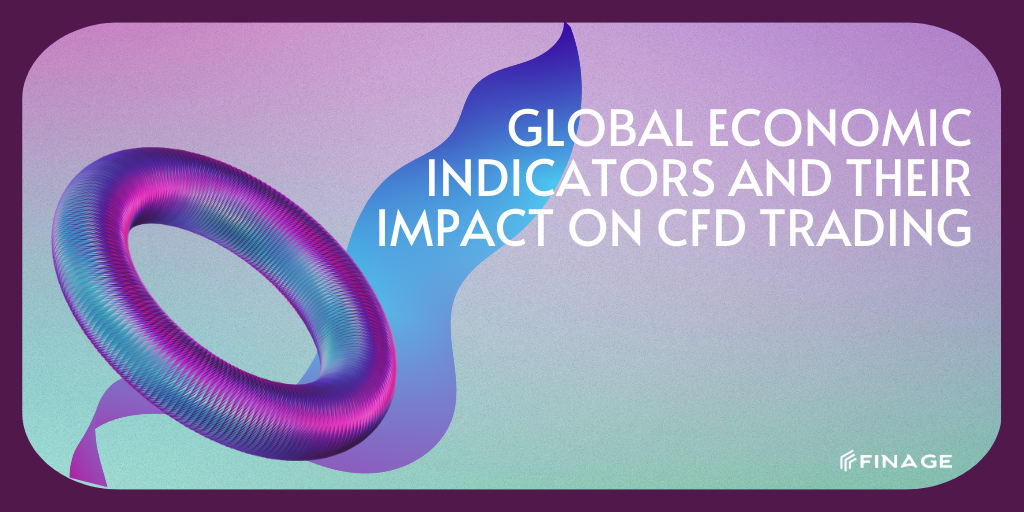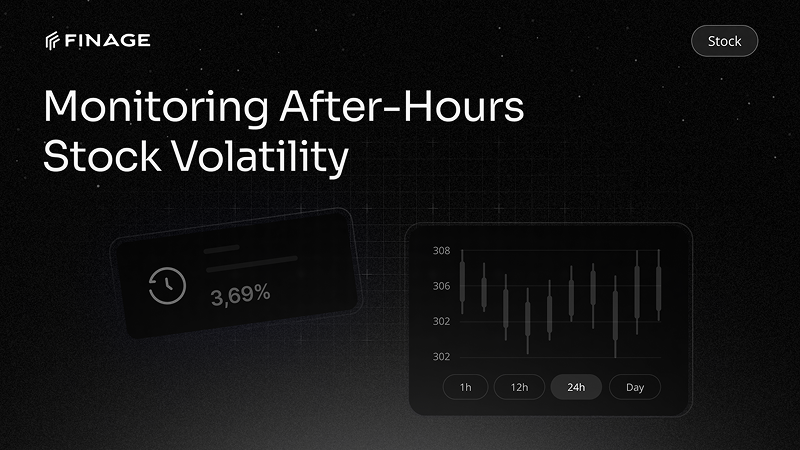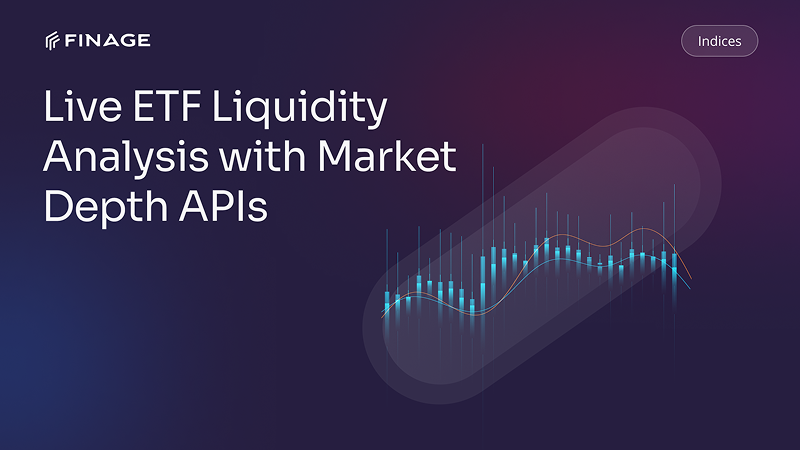Global Economic Indicators and Their Impact on CFD Trading
6 min read • May 21, 2024

Introduction
Contracts for Difference (CFDs) offer traders a versatile and dynamic way to speculate on the price movements of various financial instruments, including stocks, indices, commodities, and currencies. However, the success of CFD trading largely depends on understanding and interpreting global economic indicators. These indicators provide crucial insights into the health and direction of economies, influencing market sentiment and price movements. In this comprehensive guide, we will explore the key global economic indicators and their impact on CFD trading, offering valuable strategies for traders to navigate the markets effectively.
Introduction
CFD trading allows investors to take advantage of price fluctuations without owning the underlying assets. This leveraged product can amplify both gains and losses, making it essential for traders to have a solid understanding of the factors driving market movements. Global economic indicators are vital tools in this regard, offering insights into economic performance and helping traders anticipate potential market shifts.
This article will delve into the most important global economic indicators, including GDP growth, inflation, interest rates, employment data, and trade balances. We will discuss how these indicators impact CFD trading and provide strategies for using this information to make informed trading decisions. By understanding these indicators, traders can enhance their ability to predict market trends and manage their risks effectively.
Key Global Economic Indicators
Understanding key global economic indicators is crucial for CFD traders to anticipate market movements and make informed trading decisions.
Gross Domestic Product (GDP)
Gross Domestic Product (GDP) is a comprehensive measure of a country’s economic activity, representing the total value of all goods and services produced over a specific period. GDP growth is a primary indicator of economic health, reflecting the pace at which an economy is expanding or contracting.
Impact on CFD Trading:
- Positive GDP Growth: Indicates economic expansion, often leading to increased investor confidence and rising asset prices. Traders might look for opportunities to go long on indices and stocks.
- Negative GDP Growth: Signals economic contraction, potentially leading to lower investor confidence and falling asset prices. Traders might consider short positions on indices and stocks.
Inflation
Inflation measures the rate at which the general level of prices for goods and services is rising. It is typically measured by the Consumer Price Index (CPI) or the Producer Price Index (PPI). Moderate inflation is normal in a growing economy, but high inflation can erode purchasing power and lead to economic instability.
Impact on CFD Trading:
- High Inflation: May prompt central banks to raise interest rates to cool down the economy, potentially leading to lower stock and bond prices. Traders might short these assets.
- Low Inflation: Could lead to lower interest rates to stimulate economic activity, potentially boosting stock and bond prices. Traders might go long on these assets.
Interest Rates
Interest rates, set by central banks, are a critical tool for controlling economic activity. They influence borrowing costs, consumer spending, and investment. Changes in interest rates can have widespread effects on various asset classes.
Impact on CFD Trading:
- Rising Interest Rates: Generally lead to higher borrowing costs, reduced consumer spending, and lower investment. This can negatively impact stocks and bonds, leading traders to short these assets.
- Falling Interest Rates: Lower borrowing costs can stimulate economic activity, boosting consumer spending and investment. This can positively impact stocks and bonds, leading traders to go long on these assets.
Employment Data
Employment data, including metrics like the unemployment rate and non-farm payrolls, provide insights into the health of the labor market. Strong employment figures indicate a robust economy, while weak figures suggest economic challenges.
Impact on CFD Trading:
- Positive Employment Data: Indicates economic strength, potentially leading to higher asset prices. Traders might look for long positions in stocks and indices.
- Negative Employment Data: Suggests economic weakness, potentially leading to lower asset prices. Traders might consider short positions in stocks and indices.
Trade Balance
The trade balance measures the difference between a country’s exports and imports. A trade surplus indicates that exports exceed imports, while a trade deficit means the opposite. The trade balance can influence currency values and overall economic health.
Impact on CFD Trading:
- Trade Surplus: Can lead to a stronger currency and positive sentiment in domestic markets. Traders might go long on the currency and related assets.
- Trade Deficit: Can weaken the currency and create negative sentiment in domestic markets. Traders might short the currency and related assets.
Strategies for Using Economic Indicators in CFD Trading
Implementing effective strategies for using economic indicators can enhance CFD trading performance and risk management.
Economic Calendar Monitoring
One of the most practical strategies for CFD traders is to regularly monitor an economic calendar. Economic calendars provide schedules of upcoming economic releases, allowing traders to prepare for potential market-moving events.
Strategy:
- Plan Trades Around Major Releases: Traders should be aware of key economic indicators' release dates and times. By planning trades around these releases, traders can take advantage of increased volatility and price movements.
- Avoid High-Risk Periods: Some traders may choose to avoid trading during major economic releases to mitigate risk. This approach can help prevent unexpected losses due to sudden market reactions.
Combining Technical and Fundamental Analysis
While economic indicators provide fundamental insights, combining them with technical analysis can enhance trading decisions. Technical analysis involves using historical price data and chart patterns to predict future price movements.
Strategy:
- Confirm Signals: Use technical analysis to confirm signals from economic indicators. For example, if GDP growth is positive and a stock index is in an uptrend, traders might consider going long.
- Identify Entry and Exit Points: Technical indicators like moving averages, RSI, and support/resistance levels can help traders identify optimal entry and exit points for trades based on economic data.
Diversification
Diversification is a risk management strategy that involves spreading investments across various assets to reduce exposure to any single asset's volatility. By diversifying, traders can mitigate the impact of adverse economic events on their portfolios.
Strategy:
- Trade Multiple Asset Classes: Diversify trades across different asset classes, such as stocks, commodities, and currencies, to spread risk.
- Geographic Diversification: Consider trading assets from different geographic regions to reduce exposure to regional economic risks.
Hedging
Hedging involves taking positions that offset potential losses in other investments. This strategy can be particularly useful during periods of economic uncertainty or high volatility.
Strategy:
- Use CFDs for Hedging: CFDs can be used to hedge existing positions. For example, if a trader holds a long position in a stock portfolio, they might use CFDs to short the same stocks, protecting against potential losses.
- Hedge Against Currency Risk: Traders with exposure to foreign assets can use currency CFDs to hedge against currency fluctuations, reducing the impact of adverse exchange rate movements.
Staying Informed
Staying informed about global economic trends and news is crucial for making informed trading decisions. Regularly reading financial news, analysis reports, and market commentary can provide valuable insights into market sentiment and potential price movements.
Strategy:
- Follow Reputable Sources: Subscribe to financial news platforms, follow market analysts, and join trading forums to stay updated on economic developments.
- Use Trading Platforms with News Feeds: Many trading platforms offer integrated news feeds that provide real-time updates on economic indicators and market events.
Conclusion
Global economic indicators play a pivotal role in CFD trading, providing essential insights into market trends and potential price movements. By understanding key indicators such as GDP growth, inflation, interest rates, employment data, and trade balances, traders can make more informed decisions and develop effective trading strategies.
In this article, we have explored the impact of global economic indicators on CFD trading and provided practical strategies for using this information to enhance trading performance. By monitoring economic calendars, combining technical and fundamental analysis, diversifying, hedging, and staying informed, traders can navigate the complexities of the global economy and optimize their trading outcomes.
You can get your CFDs Indices Market Data with an Index API key.
Build with us today!
Claim Your Free API Key Today
Access stock, forex and crypto market data with a free API key—no credit card required.

Stay Informed, Stay Ahead
Finage Blog: Data-Driven Insights & Ideas
Discover company news, announcements, updates, guides and more


